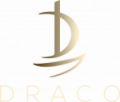
Understanding how to calculate cost per unit and its proper implementation is crucial for any business’s success and growth. Analyzing fixed and variable costs, and employing various calculating methods enable businesses to make informed decisions on pricing, production, and profitability. This guide has brought you every single detail that will help you master cost per unit if followed in the right way. Maintaining a vigilant eye on the cost per unit metric is paramount for businesses due to its far-reaching implications on financial health and competitiveness. When a company accurately calculates and manages its cost per unit, it can set competitive yet profitable prices for its products or services. This is vital for attracting customers and maintaining a strong market presence.
Variable Costs: Definition and Examples

Let’s explore how this calculation can be applied to different sets of data and how to adjust fixed assets the formula for variations. Direct labor costs include wages and benefits for employees directly involved in production. Calculating direct labor costs involves multiplying hours worked by the hourly wage rate. For example, if a worker earns $20 per hour and works 150 hours in a month, the direct labor cost is $3,000.
Order Management 101: How to Improve Cash Flow and Process
- Reducing fixed costs, such as rent and utilities, lowers warehousing expenses.
- However, it is always better to calculate this cost per unit as it can help decide the appropriate sales price of the finished product.
- We will also compare the cost per unit of different products and services and discuss the factors that affect it.
- This key metric helps businesses price products effectively and identify areas for improvement, playing a significant role in a company’s financial health and competitiveness.
- Accurate calculation is essential for setting prices and managing expenses.
- Accurate cost-per-unit data enables you to perform a break-even analysis, determining the point at which total revenue equals total costs.
- The following list contains common examples of variable expenses incurred by companies.
Direct cost per unit formula Materials are the raw materials used in the production of goods. This includes all materials that can be traced directly to the finished product. For example, in car manufacturing, steel, tires, and glass are direct materials. To calculate total manufacturing costs, you must first sum up all the direct materials used in production.
- This helps in understanding production expenses and managing budgets effectively.
- By calculating the cost per unit, they can determine the profitability of each widget and make informed decisions regarding pricing, production volume, and cost-saving measures.
- A team of fulfillment fanatics who care about our clients’ businesses like their own.
- Also, if you know the different costing elements, you can work towards reducing the different components.
- Electronic documents for electronic signature verification help avoid human mistakes resulting in reshipments and cancellations.
- Whether your business is into providing products or services, the key metric you have to monitor is the net profit.
Factors Affecting Cost Per Unit
Spending less money on material costs, which tend to account for a majority of production costs, can obviously reduce cost per unit. You can do so by optimising product sourcing, finding lower-cost manufacturers, and/or finding suppliers located closer to you. Cost per unit offers insight into how much it costs to produce a single item, receive new inventory, store it, and fulfil and ship it. By breaking down the cost per unit, you can identify inefficiencies that are driving up costs, therefore reducing profit margins. A company called CerealsCo produced units of 90kg bags of premium cereals in September 2023.
Minimise the Volume of Wasted Inventory, Reshipments, and Cancellations

It’s not just about speed; Excel helps to minimize human error, ensuring that calculations are consistent and accurate. From small businesses to large corporations, Excel’s powerful tools provide an invaluable means of handling financial data, budgeting, and forecasting with precision and ease. Help the business of finished chairs to determine the cost of production. The following list contains common examples of variable expenses incurred by companies.

This calculation helps businesses determine the incremental cost impact of scaling production up or down. To calculate total manufacturing costs, you need to add up three key components – direct materials, direct labor, and overhead costs. First, identify the cost of direct materials, which includes all raw materials used in production. Next, calculate direct labor costs, which are the wages paid to workers directly involved in manufacturing. Finally, allocate overhead, which includes expenses like utilities, equipment maintenance, and factory rent. From a financial perspective, cost per unit refers to the total cost incurred in producing a single unit of a product or service.

Understanding your fixed costs is one of the most important steps in managing your business. Whether you’re budgeting, setting prices, or analyzing profits, fixed costs tell you what expenses you need to cover — even if you don’t sell a single thing. Cost Per Unit Analysis may indicate that the cost per unit is decreasing over time due to economies of scale. However, if the analysis fails to consider the declining quality of the smartphones or the negative impact on customer satisfaction, the company may face long-term consequences.
This can be done using a variety of methods including economic order quantity (EOQ), SKU analysis, or demand forecasting. Create three tables in an open workbook (Fixed cost, variable cost, and Calculation table). Find trending pet products, automation tools, and expert tips for beginners. WareIQ is backed by leading global investors including Y Combinator, Funders Financial Forecasting For Startups Club, Flexport, Pioneer Fund, Soma Capital, and Emles Venture Partner.

